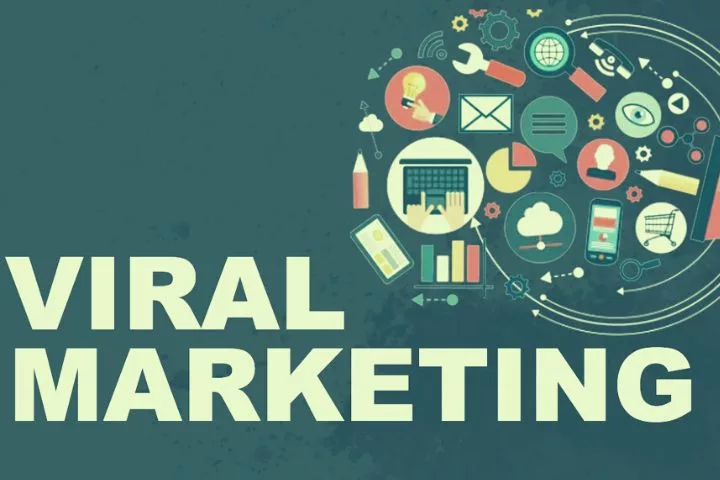Viral Marketing – Definition, What Are The Examples, Pros And Cons

When your marketing campaign becomes a sure-fire success, spreads rapidly, is shared, liked and commented on a thousand times on social networks, a dream comes true for marketers when the brand and the message are suddenly on everyone’s lips. And then, one also speaks of viral marketing.
But such a sure-fire success is not always easy to plan. So what is the secret formula for viral marketing? Is there a recipe for success that increases the chances of dissemination? You will find out the answer in this article.
Viral Marketing: Definition
Viral marketing is a specific marketing strategy that marketers use to try and spread their messages across different channels, much like a virus.
Since no channel can spread information of all kinds as quickly as social networks, social media is ideal for sending messages worldwide through videos, images or texts.
Viral marketing is characterized above all by the fact that the recipients of the advertising message do not classify it as stupid advertising.
Therefore, this discipline aims to “package” the message in such a way that it is interesting, exciting and entertaining. Whether text, image or video – ideally, the letter should trigger emotions.
This is the only way to ensure that the recipients will share and spread this message themselves. It is, therefore, a matter of developing a momentum of its own that makes it possible to send messages worldwide at high speed.
Viral Marketing: Characteristics and Success Factors
What does a message have to look like to become a viral hit? This isn’t easy to generalize because the decisive factor for success is often simply luck.
Nevertheless, there are a few characteristics that an advertising message should have. And these properties, and thus also success factors, are presented here in a bundle:
CREATIVE AND ORIGINAL IDEA
Your advertising message should contain a creative and preferably unique idea. Something that draws attention but is still easy to understand. You can also use the storytelling strategy for this and tell a story.
This story should be ideally placed around your product, brand, or service. It’s all about the perfect balance.
Of course, the story or message has to be the centre of attention to attract attention, but it should not lose your actual focus in a targeted and subtle way.
PLAN AND GOAL
Any good marketing strategy should be planned and follow a goal. This also applies to viral marketing. Although it is more difficult to follow a precise plan here, you still have to be strategic here.
Which channels should be played? Where can the target group be found? Which is better to market my product, brand or service: a video, a photo or maybe just a text post? And can I easily integrate this format on my favourite channels?
In particular, selecting tracks and supporting influencers or multipliers is an integral part of viral marketing. It is also called seeding in technical jargon.
EMOTIONS AND IDENTIFICATION
Nothing sticks in your head like touching stories. Whether they make us laugh or cry—or maybe both—messages like this don’t just spread faster.
They also become better known through “word of mouth”. Because we tell friends, acquaintances, family or work colleagues what inspired us when we have the opportunity, stories that we can identify with are particularly touching. So it would help if you didn’t neglect this aspect of your message either.
INCENTIVES
You can often create specific incentives to encourage users to spread the word, for example, through sweepstakes. So if you share the post, the video etc., you can win something.
However, this option is often dispensed with because this quickly appears as an advertisement. So it’s up to you to decide whether and to what extent such an incentive could harm your message.
Viral Marketing: Pros and Cons
Each strategy has its advantages and disadvantages. Also, viral marketing. And that’s why we would like to present you with an overview of all the relevant benefits and weaknesses so that you can see and assess all the opportunities and risks at a glance.
ADVANTAGES
If you compare viral marketing with other classic marketing campaigns, the unbeatable advantages include the low costs. Of course, this message has to be created and produced first, but it doesn’t cost anything to spread via social networks.
Of course, if you want to advertise your posts, you must have a budget available, but a good and creative message can also do it without an advertising budget.
So if you compare the costs with a TV spot or a nationwide poster advertising, the budget for viral marketing is convincing without exception.
n addition, viral marketing is speedy. Once in circulation, the message can spread rapidly. And at a speed that no other advertising measure allows.
This means that you can reach your goal in a short time, especially when the correct multipliers are in play.
By spreading it to friends and acquaintances, viral marketing also achieves a significantly higher level of trust on the part of the recipient.
Anyone who receives a video from a friend is more likely to watch it than when unknown companies spam their inbox.
DISADVANTAGES
Due to the spread of the Internet, measuring the marketing campaign’s success is more complicated. Data on purchases or an increase in awareness is difficult to conclude the viral marketing campaign.
This means that a certain amount of research and social media monitoring should also be carried out. For many marketers, these results are significant to get management approval for future campaigns.
Once in circulation, the viral marketing measure is hardly controllable or challenging to control. This circumstance means that there is always a particular risk.
On the one hand, users can react negatively to your content and quickly trigger a shitstorm. On the other hand, the opposite can also happen – namely, nothing: no viral hit, no attention.
Viral Marketing: Successful Examples
A few marketing examples show that it can work wonderfully. We briefly introduce you to three of the most successful viral marketing campaigns.
ICE BUCKET CHALLENGE
The so-called “Ice Bucket Challenge” started in 2014. Indeed this will remain in many people’s minds. In principle, it was a test of courage, in which you showered yourself with an ice water bucket and then shared the video on social networks.
At the end of the video, other friends were nominated to do the same. This campaign aimed to raise awareness of the incurable nervous disease ALS (amyotrophic lateral sclerosis) and generate donations.
The Ice Bucket Challenge was not only shared on social media but also news channels, and online magazines reported about it – and that worldwide.
OSCAR SELFIE
Another viral hit was Ellen DeGeneres’ selfie at the 2014 Academy Awards. This selfie featured some of Hollywood’s biggest stars, such as Bradley Cooper, Jennifer Lawrence, Brad Pitt and Julia Roberts.
It was shot mid-show with TV cameras rolling and was posted directly to Ellen DeGeneres’s Twitter account. The tweet received several million retweets thanks to the cross-media attention and was seen worldwide.
The highlight: The selfie was taken with a Samsung Galaxy Note, the award’s sponsor. For this tweet’s tremendous engagement, Samsung made millions of dollars in charitable donations available.
Conclusion: Viral marketing is more than a brilliant idea
You indeed recognise that viral marketing cannot be planned or controlled. Especially not nowadays. Because it doesn’t matter whether it’s TikTok, Instagram or other channels – there is always a trend or a challenge that competes with you and your marketing idea. Therefore, in addition to a brilliant idea, there is always a bit of luck involved.






